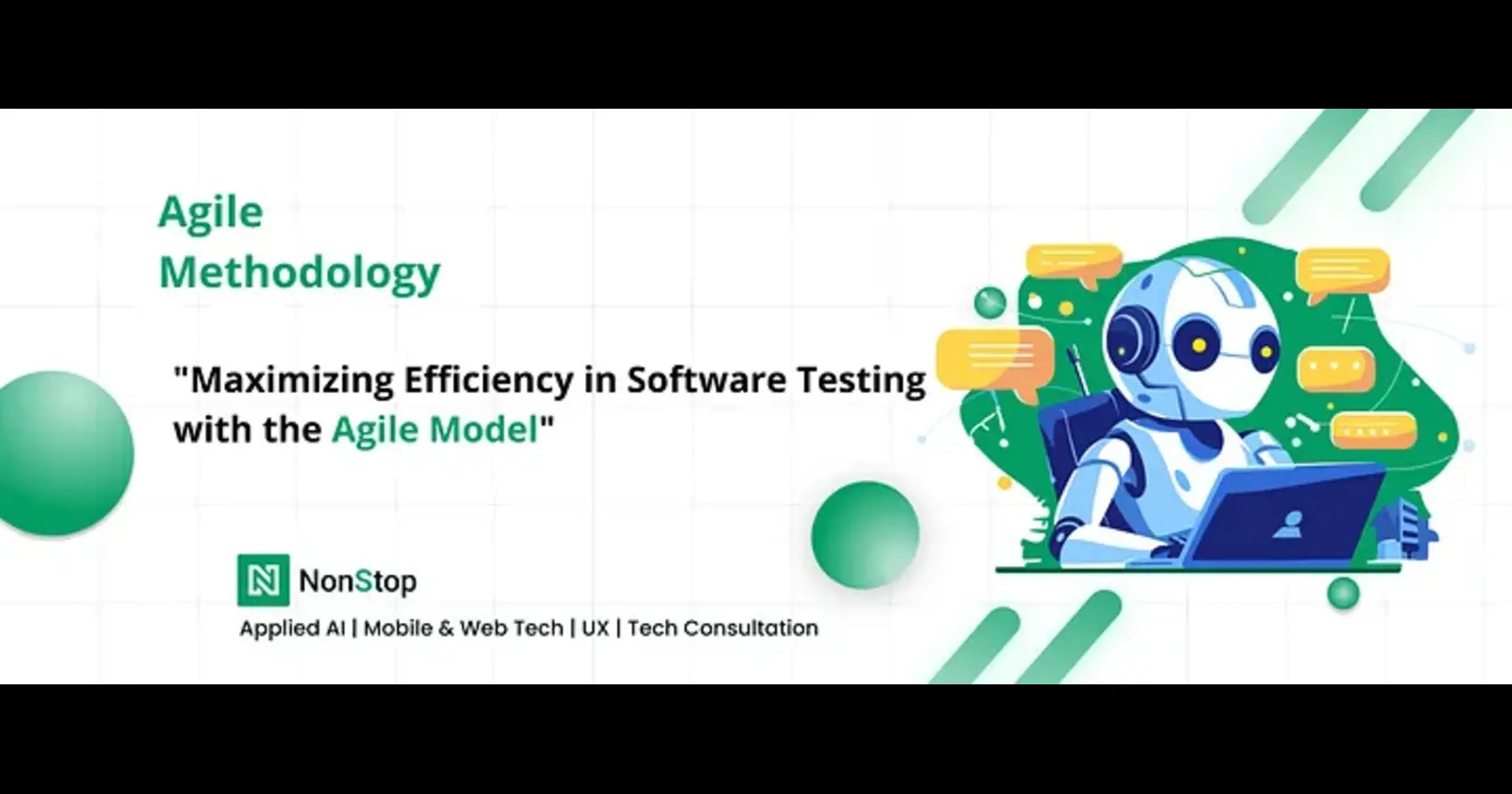Agile Methodology
 NonStop io Technologies
NonStop io Technologies
Derived from “swift” or “versatile,” Agile is a flexible, iterative method for building software. The Agile process model is based on a technical product delivery, dividing the whole of your development into smaller iterations, called iterations. It reduces the risk and is flexible to changing requirements, hence its apt for fast paced environments.
Agile methodologies are highly beneficial from a testing perspective because they ensure continuous testing throughout the development lifecycle.
Each iteration is considered as a short time “frame” in the Agile process model, which typically lasts from one to four weeks. The division of the entire project into smaller parts helps to minimize the project risk and reduce the overall project delivery time requirements. Each iteration involves a team working through a full software development life cycle including planning, requirements analysis, design, coding, and testing before a working product is demonstrated to the client.
The Agile model is a flexible and iterative approach to software development and testing that emphasizes collaboration, customer feedback, and rapid delivery. Unlike traditional models such as the Waterfall model, Agile integrates testing throughout the development lifecycle, enabling teams to identify and resolve issues more quickly.
Key Features of Agile Testing:
Continuous Testing: Testing is conducted throughout the development lifecycle.
Collaboration: Close interaction between testers, developers, and stakeholders.
Adaptability: Test plans and cases are flexible to accommodate changes in requirements.
Automation: High emphasis on automated testing for faster feedback.
Frequent Deliverables: Testing focuses on smaller, incremental releases to ensure quality.
Phases of the Agile Model :

1. Requirement Phase :This is the foundational phase where the project’s scope and requirements are defined. Agile focuses on delivering a working product incrementally, so requirements are captured in small, manageable chunks called user stories.
Collaborate with stakeholders to gather initial requirements.
Break down requirements into user stories or features.
Prioritize the product backlog based on business value.
Define acceptance criteria for each user story.
2. Business Analysis Phase : In this phase, the gathered requirements are analyzed in detail to ensure they align with business objectives. This phase helps refine user stories and prepare for design and development.
Validate requirements against business goals.
Analyze the feasibility and prioritize tasks.
Refine user stories to ensure clarity and completeness.
Define the acceptance criteria more explicitly.
3. Design Phase :
The design phase involves creating a structured plan for how the system will be built and implemented. In Agile, designs are kept lightweight and iterative to adapt to evolving requirements. This phase focuses on both high-level and low-level design to ensure a comprehensive and scalable solution.
High-Level Design (HLD):
High-level design is focused on the overall architecture of the system and is typically created by the Product Architect or Solution Architect.
Low-Level Design (LLD):
Low-level design delves into the implementation details and is created by Senior Developers or Technical Leads.
4. Development Phase :
This is where coding takes place. Agile promotes iterative development, with developers building and delivering small, functional increments of the product
Write and test code for the selected user stories within a sprint.
Perform peer code reviews and refactoring.
Integrate new code with existing components.
5. Testing Phase :
Testing in Agile is a continuous process rather than a separate phase. It occurs simultaneously with development to ensure issues are identified and fixed quickly.
Execute manual and automated test cases for the features developed in the sprint.
Perform regression testing to verify that new changes haven’t affected existing functionality.
Conduct various types of testing, such as functional, performance, and security testing.
6. Review/Feedback Phase : This phase ensures that the delivered product meets customer expectations. Feedback is gathered from stakeholders, end-users, or customers to improve future iterations
Conduct sprint reviews to present completed user stories to stakeholders.
Gather feedback from stakeholders and customers.
Update the product backlog with new requirements or improvements based on feedback.
Plan for the next sprint or iteration.
Conclusion:
The Agile process model transforms the role of testing into an ongoing, collaborative effort that happens throughout the development lifecycle. By dividing the project into smaller, manageable parts and involving testers in every iteration, Agile reduces risks, enhances quality, and ensures the product is built in alignment with client expectations. This iterative and collaborative approach is why Agile is considered a highly effective model in modern software development.
Subscribe to my newsletter
Read articles from NonStop io Technologies directly inside your inbox. Subscribe to the newsletter, and don't miss out.
Written by

NonStop io Technologies
NonStop io Technologies
Product Development as an Expertise Since 2015 Founded in August 2015, we are a USA-based Bespoke Engineering Studio providing Product Development as an Expertise. With 80+ satisfied clients worldwide, we serve startups and enterprises across San Francisco, Seattle, New York, London, Pune, Bangalore, Tokyo and other prominent technology hubs.